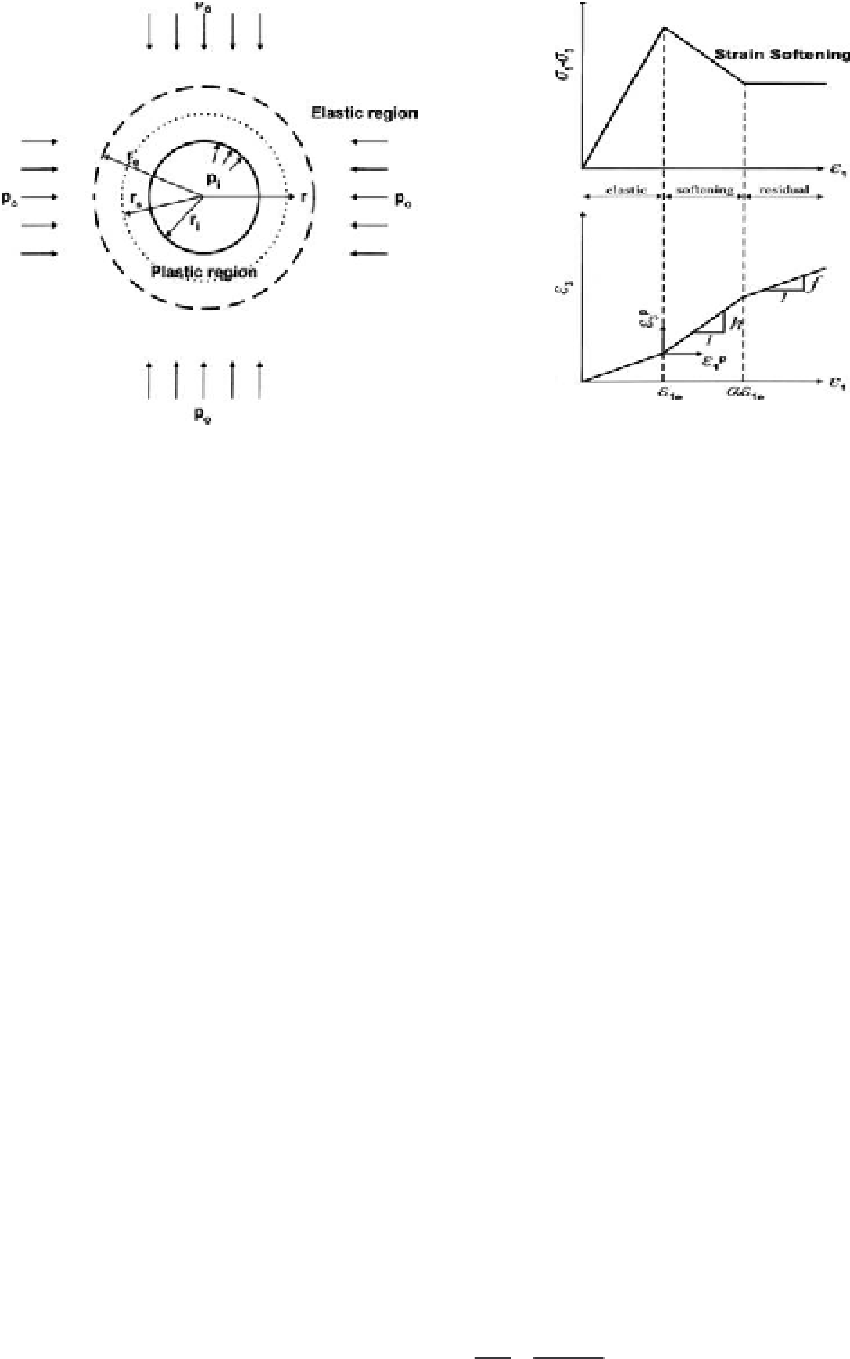Environmental Engineering Reference
In-Depth Information
Figure 2.
elastic-strain softening model (Brown et al., 1983).
Figure 1.
a circular tunnel in an infinite medium.
p
CC
CC
p
=−
−
(
)
γ
post-yield softening behaviour. it is required to solve
for the stresses and displacements in the plastic
region to obtain the ground reaction curve.
hoek-Brown yield criterion is implemented in
this study as nonlinear yield function:
p
r
(8)
p
*
γ
γ
p
= the softening parameter, and
γ
p*
= the value
of the softening parameter controlling the transition
between the softening and residual stages. in this
study the softening parameter is defined as the differ-
ence between the major and minor principal plastic
strains, which reflects the plastic shear strain:
σ
θ
=
σ
r
+ (
mσ
c
σ
r
+
s
)
0.5
(1)
in which
σ
c
= the uniaxial compressive strength
of the intact rock material,
m
and
s
= material
constants which depend on the properties of the
rock and on the extent to which it has been broken
before being subject to the stresses.
Mohr-coulomb yield criterion is used here as
linear yield function:
p
p
p
e
e
)
(9)
γ ε ε ε ε ε ε
θ
=−= −−−
(
)
(
r
θ θ
r
r
there are different way of apply variable dilatancy
for example the constant dilatancy (Brown et al.,
1983), the linear decrease of dilatancy (alonso
et al., 2003) and an exponential decreasing of
dilatancy with plasticity (Detournay, 1986; ale-
jano and alonso, 2005), can be considered. in this
study dilatancy angle changes linearly from peak
to residual values as following:
σ
θ
=
σ
c
+
σ
r
K
(
ϕ
)
(2)
where
K
(
ϕ
) and
σ
c
is defined as following:
1
1
+
−
sin
sin
ϕ
ϕ
K
()
ϕ
=
(3)
p
ψψ
ψψγ
γ
=−
−
p
(
)
p
r
ϕ = the friction angle of rock mass and
c
is the
rock mass cohesive strength. strength parameters
change gradually from peak to residual values for
both criteria as following:
(10)
p
*
2.1
Stepwise procedure for elastic-strain softening
rock
assuming a state of plane strain and axial sym-
metry around the tunnel opening, the equilibrium
equation and strain-displacement relation in polar
coordinate system are given by
p
mm
mm
p
=−
−
(
)
γ
p
r
(5)
p
*
γ
p
ss
ss
p
=−
−
(
)
γ
p
r
(6)
p
*
γ
p
ϕϕ
ϕϕγ
γ
=−
−
p
(
)
p
r
d
dr
σ σ
θ
+
−
(7)
r
r
(11)
= 0
p
*
r





















